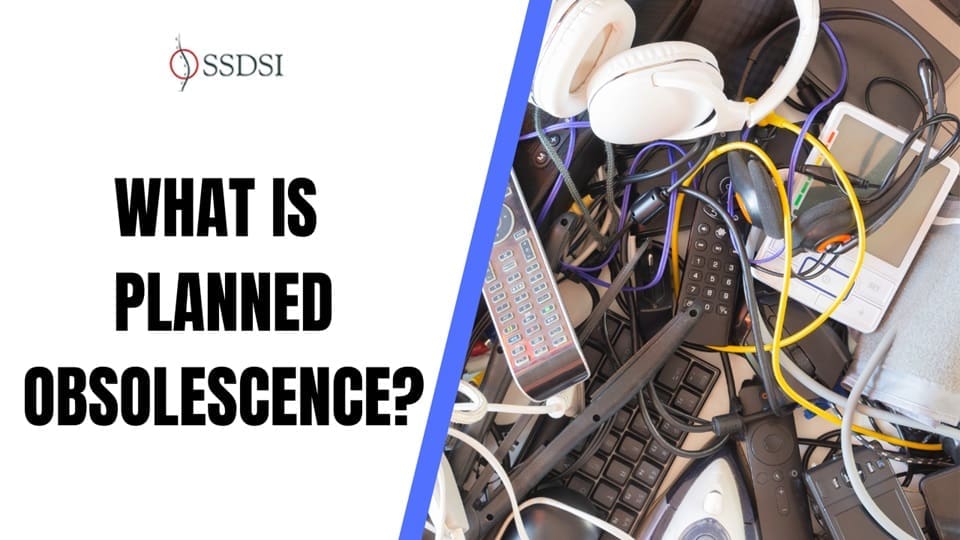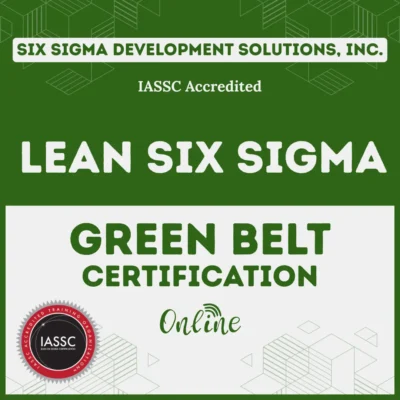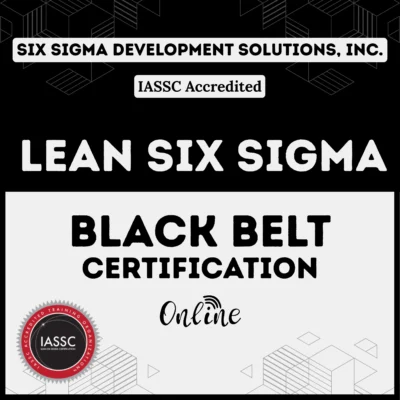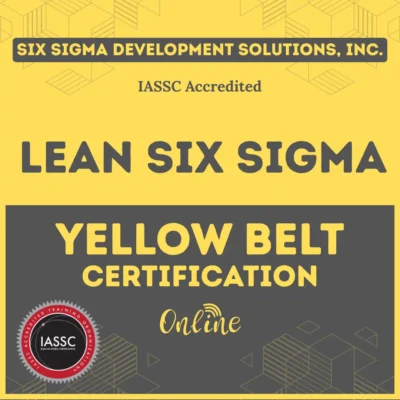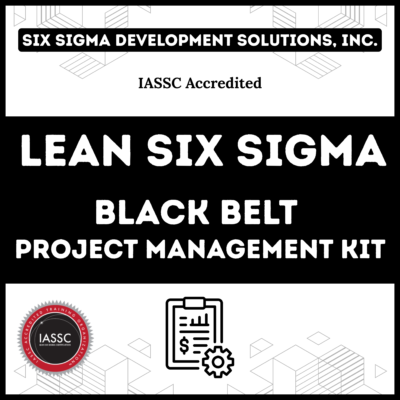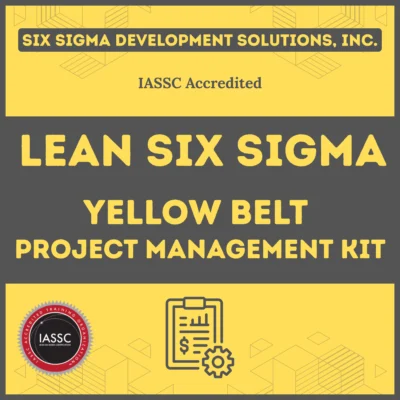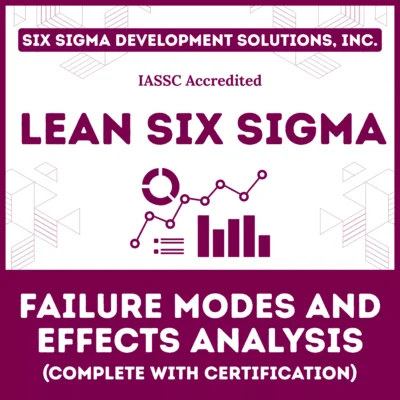Planned obsolescence refers to intentionally designing and manufacturing products with a limited lifespan. This ensures the product becomes outdated or non-functional after a certain period, compelling consumers to replace it. It is a business strategy that promotes the continual purchase of newer products, driving sales.
However, this practice has stirred significant debate regarding its ethics and impact on consumers and the environment.
Planned obsolescence is not accidental. It is a conscious decision by manufacturers. They aim to shorten the product’s useful life. This is done before its natural end. The goal is to boost sales over time. Consumers need to purchase new versions. This happens more frequently.
This practice differs from normal wear and tear. Products naturally degrade with use. Planned obsolescence intentionally accelerates this. It makes products obsolete sooner. This can be through design or software limitations.
Table of contents
What Is Planned Obsolescence?
Planned obsolescence is a strategy used by companies to ensure their products become outdated or stop functioning after a certain period. This strategy encourages consumers to replace products frequently, increasing demand for newer versions. Manufacturers achieve planned obsolescence in several ways.
They may introduce new models with upgraded features or design a product to break or wear out at a specific time. This tactic ensures that consumers will continuously purchase newer models, which boosts sales and keeps companies competitive.
Key Characteristics of Planned Obsolescence
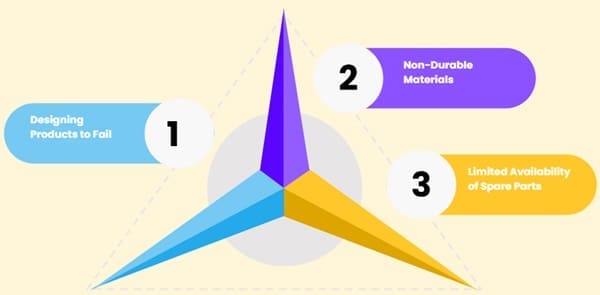
At its core, planned obsolescence is about controlling the lifespan of a product. By making products obsolete sooner than they could naturally become outdated, businesses force customers to buy replacements. There are various ways to achieve this, including:
- Designing Products to Fail: Products are intentionally made with components that wear out after a set period. For example, light bulbs were once designed to last for thousands of hours. However, manufacturers later limited their lifespan to encourage more frequent replacements.
- Non-Durable Materials: Some products are made with materials that degrade quickly, ensuring they wear out within a predictable time frame.
- Limited Availability of Spare Parts: Some companies stop producing parts for older models, making repairs difficult or expensive. Without access to spare parts, consumers are forced to buy newer products.
History of Planned Obsolescence
The origins of planned obsolescence trace back to 1924 in Geneva, Switzerland. A group of leading lightbulb manufacturers formed the Phoebus Cartel. They faced the problem that lightbulbs were lasting too long, which hurt sales. To combat this, they agreed to reduce the lifespan of lightbulbs from 2,500 hours to 1,200 hours, which boosted sales by 25%. This approach to intentionally shortening the life of a product laid the foundation for the planned obsolescence strategy used today.
Though the Cartel dissolved in the 1930s, its impact remains. Today, many industries apply similar techniques to ensure their products are replaced frequently, benefiting both manufacturers and the economy, but causing harm to consumers and the environment.
How Planned Obsolescence Works?
Planned obsolescence can take several forms:
Built-in Obsolescence: Manufacturers design products with weaker components that wear out more quickly. For example, a smartphone may use cheaper materials that make the device break down faster.
Perceived Obsolescence: This involves making older products seem outdated, even if they still function well. A common example is when companies launch new phone models, making previous models seem inferior. Consumers, feeling pressure to have the latest product, replace their old items.
Software Updates: Some companies, like Apple, have been accused of slowing down older devices through software updates, making users feel the need to upgrade.
Types of Planned Obsolescence
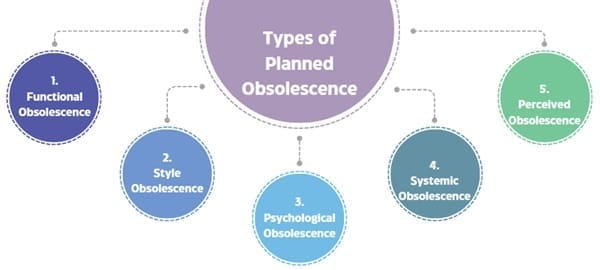
There are several types of planned obsolescence. Each type ensures products become outdated. This happens for different reasons.
Functional Obsolescence
This occurs when a product stops working. It happens due to a design flaw. Or it is made with low-quality materials. Electronic devices are common examples. They might fail after a set period. Components can break down easily. Repairs might be too costly or impossible. This forces consumers to buy new ones.
For example, some electronics have batteries. These batteries are not replaceable. Once the battery dies, the device is useless. This is functional obsolescence at play.
Style Obsolescence
This type focuses on making products look outdated. Fashion is a prime example. Trends change rapidly each season. Clothes from last year may seem unfashionable. Cars also undergo styling changes. New models appear more appealing. This encourages people to buy the latest styles. Even if their current items still function well.
Psychological Obsolescence
This happens when consumers feel the need for an upgrade. Even if their current product works fine. Marketing and advertising play a big role. New features and designs are heavily promoted. This creates a desire for the newer version. Smartphones are a classic example. New models with minor upgrades come out yearly. Many consumers feel compelled to buy them.
Systemic Obsolescence
This occurs when a product becomes incompatible. It cannot work with newer systems or accessories. Software updates can make older devices slow. Or certain apps may no longer be supported. Printers and ink cartridges are another example. Printers might only work with specific cartridges. Older printers may not be compatible with new operating systems. This forces users to upgrade the entire system.
Perceived Obsolescence
This type relies on marketing and branding. Companies make consumers believe their product is outdated. Even if there is no real functional difference. This can be through advertising campaigns. Or by highlighting minor improvements in new models. The focus is on creating a perception of being behind. This pushes consumers to make unnecessary purchases.
Reasons for Planned Obsolescence

Companies implement this strategy for several reasons. The primary driver is often economic.
Increase Sales and Profits
By shortening product lifespans, companies can sell more units. Consumers are forced to replace items more often. This leads to increased revenue and profits for manufacturers.
Maintain Economic Growth
Some argue that planned obsolescence fuels economic growth. It creates demand for new products. This supports jobs in manufacturing, retail, and related industries.
Drive Innovation (Arguably)
Proponents suggest it encourages faster adoption of new technologies. As older products become obsolete, consumers are more likely to buy newer, more advanced versions.
Arguments in Favor of Planned Obsolescence
While controversial, some argue for its benefits.
Job Creation: It can lead to job creation in various sectors. Manufacturing, design, and sales all benefit from continuous demand.
Lower Initial Product Costs: Products designed for shorter lifespans might have lower initial costs. This can make them more accessible to consumers.
Faster Adoption of New Technologies: It can accelerate the spread of new and improved technologies. Consumers are pushed to upgrade more frequently.
Arguments Against Planned Obsolescence
There are significant criticisms of this practice.
Increased Waste and Environmental Damage: It leads to a large amount of waste. Products are discarded prematurely. This puts a strain on landfills. It also increases the demand for raw materials. Manufacturing new products consumes energy and resources. This has negative environmental consequences.
Higher Long-Term Costs for Consumers: While initial costs might be lower, consumers end up spending more in the long run. They have to replace products more frequently. This can be financially burdensome.
Ethical Concerns About Manipulation: Critics argue that it is unethical. Companies intentionally design products to fail or become outdated. This manipulates consumers into buying more than they need.
Impact on Consumers
Planned obsolescence affects consumers in several ways. They face a cycle of continuous consumption. They might feel pressured to buy the latest models. This can lead to financial strain and frustration. Consumers might feel their products should last longer.
Environmental Implications
The environmental impact is significant. Increased waste contributes to pollution. The extraction of raw materials depletes natural resources. The manufacturing process consumes energy. This contributes to greenhouse gas emissions and climate change. Electronic waste, in particular, contains hazardous materials. Improper disposal can harm the environment and human health.
Planned vs. Perceived Obsolescence
It’s important to distinguish planned obsolescence from perceived obsolescence. Planned obsolescence refers to the deliberate design of products to wear out or become obsolete.
Perceived obsolescence occurs when products become less desirable due to changing trends or fashion. In other words, a product may still work perfectly fine, but it is considered outdated because a newer, more fashionable version has come along.
| Feature | Planned Obsolescence | Perceived Obsolescence |
| Definition | Intentionally designing a product with a limited lifespan. | Changing consumer perception of a product’s value. |
| Mechanism | Physical limitations, software updates, incompatibility. | Marketing, advertising, trends, and social influence. |
| Goal | Increase repeat sales through product failure. | Increase sales through perceived desirability. |
| Product Design | Built-in flaws, limited parts, non-replaceable components. | Cosmetic changes, new features, branding. |
| Consumer Focus | Forced replacement due to product breakdown. | Voluntary replacement due to perceived outdatedness. |
| Ethical Issue | Wasteful, deceptive, and potentially harmful. | Manipulative, creates unnecessary consumption. |
| Examples | Light bulbs, printers, software updates that slow down devices. | Fashion trends, new phone models, car designs. |
| Lifespan | Deliberately shortened. | Subjective and influenced by marketing. |
| Impact on User | Frustration, increased costs, environmental harm. | Desire for the latest model, feeling of being outdated. |
| Sustainability | Highly unsustainable. | Unsustainable, encourages overconsumption. |
Consumer Reaction to Planned Obsolescence
Consumers often react negatively to planned obsolescence. If the new versions of products don’t offer significant improvements, consumers may feel that they are being exploited. Some brands have been criticized for shortening product lifespans for profit, leading to a loss of trust and customer loyalty.
However, in some cases, companies engage in planned obsolescence to control costs. For instance, a company might choose to use lower-cost components in its devices, which will last for a shorter period. While this can be frustrating for consumers, it may allow companies to maintain affordable pricing for their products.
Apple and Planned Obsolescence
Apple is one of the most well-known companies associated with planned obsolescence. The company has been accused of intentionally slowing down older iPhones through software updates, prompting users to buy newer models.
This practice led to a major scandal known as “Batterygate,” where Apple faced legal action over claims that it had deliberately made older phones slower to encourage consumers to upgrade.
While Apple denies intentionally engaging in planned obsolescence, some studies have shown that updates to iOS can cause performance issues on older devices. Despite these controversies, the company’s practices have sparked debates about whether planned obsolescence can drive innovation in the tech industry.
Economics of Planned Obsolescence
Planned obsolescence has roots in economic theories about consumption and production. With mass production, the economy shifted towards consumption rather than production. As a result, producers needed to find ways to encourage repeat purchases. By shortening the life cycle of products, businesses could boost sales and maintain high profit margins.
This is particularly important for durable goods, such as electronics and appliances. When products last too long, consumers buy less often, which limits profits for manufacturers. By ensuring that products wear out faster or become outdated, companies can increase demand and sales.
Environmental and Ethical Concerns
While planned obsolescence may benefit businesses, it comes with significant environmental and ethical concerns. The constant production and disposal of products contribute to resource depletion and environmental damage. For example, millions of smartphones and computers are discarded each year, creating massive amounts of electronic waste.
In addition, the practice of designing products to fail prematurely raises questions about consumer rights and fairness. Critics argue that businesses should focus on creating durable, long-lasting products rather than encouraging a culture of constant replacement.
Examples of Planned Obsolescence
- Apple Products: As mentioned earlier, Apple’s product design is often cited as an example of planned obsolescence. Apple’s laptops and smartphones have components, such as batteries, that are difficult to replace or repair. When these components wear out, consumers are often forced to upgrade instead of repairing their devices. This practice is intended to increase sales by encouraging consumers to purchase new products more frequently.
- Inkjet Printers: Some printer manufacturers use chips in ink cartridges that prevent the cartridges from working once the ink reaches a certain level. This encourages consumers to buy new cartridges even if there is still usable ink inside. Additionally, some cartridges are designed to stop functioning after a certain number of prints, forcing consumers to purchase replacements sooner than necessary.
- Textbooks: Publishers often release new editions of textbooks more frequently than necessary. These new editions often contain only minor updates or changes, yet they are marketed as essential for students. This practice makes it difficult for students to buy used textbooks, as older editions become obsolete once the new edition is released.
Why Planned Obsolescence Exists?
Planned obsolescence exists because it serves the interests of both businesses and consumers. For companies, it increases profits by encouraging repeat purchases and reducing competition from second-hand markets. For consumers, the constant release of new products with updated features satisfies their desire for the latest and greatest technology.
The rapid pace of technological innovation also plays a role in planned obsolescence. As new technologies emerge, older products quickly become outdated, making it difficult for consumers to keep up. This results in a cycle of constant replacement, with businesses benefiting from the demand for new products.
Negative Impact of Planned Obsolescence
The consequences of planned obsolescence extend beyond consumer dissatisfaction. The environmental impact is significant, as the constant replacement of products leads to increased waste and pollution. Electronic waste, in particular, is a major concern, as it contains harmful chemicals and metals that can harm the environment.
Ethically, planned obsolescence raises questions about the fairness of businesses designing products to fail prematurely. Many consumers feel that they are being manipulated into spending more money than necessary on products that are not built to last.
Primary Research on Planned Obsolescence
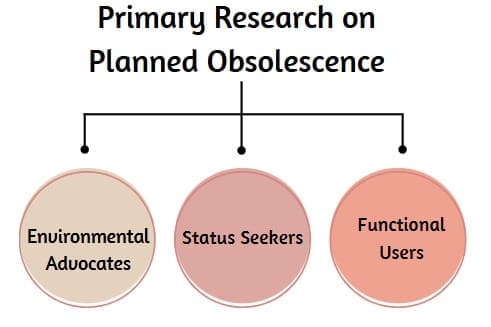
To understand consumer awareness of planned obsolescence, a study was conducted among iPhone users. The study aimed to uncover consumer attitudes toward the practice and how it influences their buying decisions. The findings revealed three distinct types of iPhone users:
Environmental Advocates: These individuals are concerned about the environmental impact of frequent product replacements. They often switch to Android devices, believing they have longer lifespans.
Status Seekers: For these consumers, the iPhone represents a symbol of wealth and social status. Despite knowing about planned obsolescence, they continue to buy new iPhones because of the brand’s prestige.
Functional Users: These consumers value the user experience and familiarity of the iPhone. While they are aware of the planned obsolescence issue, they are willing to stick with Apple as long as the iPhone meets their needs.
The study also revealed that many users are not fully aware of how planned obsolescence impacts their devices. This lack of awareness is a barrier to consumer action against the practice.
Addressing the Problem of E-Waste
E-waste is one of the most significant consequences of planned obsolescence. Each year, millions of tons of electronic waste are generated globally. The European Union alone produces around 2.5 million tons of e-waste annually. This waste often ends up in developing countries, where it is poorly managed and processed. Hazardous materials from discarded electronics can contaminate the environment and harm human health.
One solution to the e-waste problem is the promotion of product repairability. If consumers could easily repair their devices instead of replacing them, the amount of waste generated would decrease significantly. This is why there is growing support for the “Right to Repair” movement, which advocates for easier access to repair parts and instructions.
European Efforts to Combat Planned Obsolescence
The European Union has been active in addressing planned obsolescence. In 2013, the EESC adopted a report calling for a ban on planned obsolescence in Europe. This report emphasized the need for consumers to be given clear information about the expected lifespan of products.
Additionally, the EESC has supported efforts to make repair services more accessible and affordable, encouraging the growth of a sustainable repair industry.
In response to consumer demand, many companies are now offering products with longer lifespans. For instance, vacuums and printers with longer lifespans have seen increased sales in Europe. Consumers are willing to pay more for products that will last longer, reflecting a shift toward more sustainable purchasing decisions.
Planned Obsolescence in the Technology Industry
Apple is one of the most well-known companies accused of using planned obsolescence. There have been numerous claims that Apple intentionally slows down older iPhones with software updates, pushing users to upgrade to newer models.
Additionally, Apple’s accessories, such as charger cables, have been criticized for their poor durability. While Apple denies these accusations, the perception of planned obsolescence has led to widespread discontent among its customers.
One of the significant issues tied to planned obsolescence in technology is the creation of electronic waste (e-waste). Consumers often discard their devices when they are no longer functional or when newer models are available. E-waste is a growing problem worldwide, causing environmental damage and posing health risks due to the hazardous materials found in discarded electronics.
Impact of Planned Obsolescence on the Environment
Planned obsolescence contributes to massive amounts of waste. As products are designed to break down or become outdated quickly, consumers dispose of them more frequently. Electronic waste (e-waste) is particularly problematic as it contains toxic substances like lead, cadmium, and mercury. These substances can leach into the soil and water, causing significant environmental harm.
In addition to the waste created by discarded products, planned obsolescence accelerates the depletion of natural resources. Materials like cobalt, lithium, and rare earth metals used in smartphones and other electronics are becoming scarcer. As demand increases, manufacturers continue to extract these materials, causing environmental destruction in the process.
Final Words
Planned obsolescence is a strategy used by companies to ensure that their products become outdated or stop functioning after a certain period. This tactic encourages consumers to purchase replacements, increasing demand for new products and boosting sales.
While it can drive innovation and improve technology, it also comes with significant environmental and ethical concerns. Consumers are increasingly aware of these issues, leading to debates about whether companies should focus on creating durable products rather than pushing for constant replacement.

About Six Sigma Development Solutions, Inc.
Six Sigma Development Solutions, Inc. offers onsite, public, and virtual Lean Six Sigma certification training. We are an Accredited Training Organization by the IASSC (International Association of Six Sigma Certification). We offer Lean Six Sigma Green Belt, Black Belt, and Yellow Belt, as well as LEAN certifications.
Book a Call and Let us know how we can help meet your training needs.

